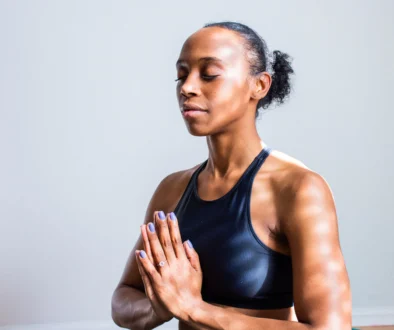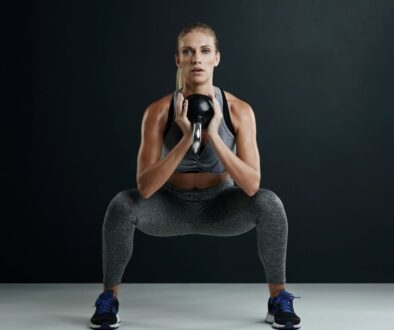8 Top Tips on How to Make the Most of Your Walks
There are plenty of fitness regimes out there to try, from HIIT to Crossfit. But many of us overlook the benefits of a simple walk for our health and wellbeing. If gyms aren’t your thing (or they have all closed because of a global pandemic), walking is a simple, low-cost, and effective way of getting your body moving.

The NHS recommends that we should all be exercising for 150 minutes each week, and even just a brisk 10-minute walk a day can count towards that goal. So, however busy you are, you should be able to fit a walk into your day.
If you want to get the most from your daily walks, our guide to walking for health should help get you started.
The benefits of walking
Before we get stuck into the tips and tricks, it is worth looking at some of the amazing benefits that walking regularly has for our health and wellbeing. It is easy to dismiss walking as not being ‘proper’ exercise, but this is far from the case. Walking is good for our bodies, our minds, and even our social lives.

1. Walking is good for our physical health
Being physically active is important for our health and can reduce the risk of developing diseases such as diabetes, liver disease, cancer, arthritis, and cardiovascular disease. But high-intensity exercise isn’t possible for everyone. Walking is a gentle way of getting our bodies moving.
2. Walking is good for our mental health
Walking combines both physical activity and time outdoors. Both are beneficial for our mental health. Taking regular walks has shown benefits for a whole range of mental health issues, including depression, anxiety, and insomnia.
3. Walking can reduce loneliness
According to the Campaign to End Loneliness, 45% of adults in the UK sometimes experience loneliness. Not only is this bad for our mental health, it can have a knock-on effect on our physical health too, leading to high blood pressure and heart disease.
Fortunately, hobbies such as walking can help to combat loneliness by giving us a structured way to spend time with other people. Walking with friends or joining a walking group are excellent ways to prevent loneliness.

Hopefully, you are now convinced of the advantages of a daily walk for your wellbeing. But how do you make sure you are getting the most from your new walking habit? Let’s look at some practical ways to ensure your walks are giving you all the benefits you need.
Tips for making the most of your walks
1. Invest in the right clothes
Walking is a low-cost activity, but it is worth spending a little bit on suitable clothing and footwear, so that you can carry on walking even in the colder, wetter months. What you decide you need will depend on where you walk, how long for, and whether you will be walking even when the weather is bad. As a general guide, you might consider buying the following:
- A good pair of waterproof walking boots – make sure they fit you well and won’t rub. If you’ll be walking in the countryside, good grip is key to prevent you slipping and sliding when it is wet and muddy. Unless your usual walking route is very waterlogged, walking boots are usually a better choice than wellies, which don’t have as much grip.
- Practical clothing – you can easily walk in whatever you already own, but walks can get muddy, especially in the wintertime. Having practical clothes that you don’t mind getting dirty means you don’t have to worry about ruining your everyday clothes. Choose layers for walking in colder weather and look for quicker drying fabrics for the wetter months. Jeans, for example, take a long time to dry when they get wet and can rub along the seams. A good pair of walking trousers or leggings avoids this issue.
- A lightweight waterproof – you don’t necessarily want a big jacket when you are walking, which can end up making you too hot and sweaty. Instead, choose a light waterproof. You can always wear multiple layers underneath it in colder weather. Look out for waterproofs with double zips, adjustable hoods, and Velcro wrist cuffs to keep out the rain. Depending on your local weather patterns, you might also want waterproof trousers.
- A wide-brimmed hat – hoods are good for keeping the rain off your neck and hair but do nothing to prevent it from going in your eyes. For walking in the rain, a hat with a wide brim can help keep you dry and still able to see clearly. You can wear it over your hood for ultimate rain protection. Yes, you may look a bit silly, but you’ll be dry and comfortable, which is far more important.
Search Walking Shoes on Amazon

2. Plan your routes
Although there can be a great adventure in setting off without knowing where you will end up, most of us are limited on time, so planning your route before you head off on your walk will help you find a trail that fits the time you have available. That means you can spend more time walking, and less time trying to navigate.
If you are a keen map reader, you can use a local OS map to plan your walks. But there are also apps available to help you find local walks in your area, without having to take a large paper map with you. You can do this just in Google Maps, though it doesn’t always recognise footpaths. Or you can download one of the free apps dedicated to walkers. Examples include:
3. Walk with others
As we’ve already discussed, walking with others can be a great way to combat loneliness and support your mental health. It can also help you to make walking a regular habit since you’ll have someone else to hold you accountable.
If you already know people who are keen walkers, make a regular date to walk together – you can take it in turns to pick the route so that you both have a chance to learn new trails.
If you don’t know anyone who walks, or you are keen to meet new people, try joining a walking group. There are lots available and many are aimed at a particular age group or fitness level, so you don’t have to worry about whether you will be able to keep up. Some places you can look to find a walking group in the UK include:

You can also search online to find walking groups for your local area. Many smaller groups exist and most will have an online presence, even if it is only a Facebook page. Another place to look for local groups is on the noticeboard at your local library or community centre.
4. Pick up the pace
According to the NHS, we get the best results from walking when we go at a brisk pace, which they say is around 3 miles per hour. This may be a little faster than your usual walking pace.
To make sure you are going fast enough, you can use a fitness tracker or an app on your phone to monitor your speed. You can also work it out manually by dividing the distance you’ve walked by the time it takes you. If you’ve taken our advice and mapped your walk before you set out, you can give yourself check-in points – if you reach them in the right amount of time, you know you are walking fast enough.
Search Fitness Tracker on Amazon
5. Take a walk on the wild side
Maximise the mental health benefits of your walks by getting out into nature. A 2018 study comparing the impact of a brief walk in a wooded area with a city walk found that walking in the forest was the most effective at reducing the symptoms of anxiety and depression.

Being in nature is well-established as a way to reduce stress, improve our moods, and increase our mental wellbeing. If you live in an urban area, planning to go slightly further afield for your walks on your non-workdays may help you to find natural areas.
But there are also plenty of ways to walk in nature even in cities – use Google maps to help you find your local green spaces. Parks, nature reserves, and wild spaces can be found in most urban areas. You will just need to look a little harder than you might if you lived in the countryside.

6. Retire the car
Going for a walk doesn’t always have to be a planned activity in itself. For short, local journeys, retiring the car and going on foot instead is an easy way to incorporate walking into your daily routine. Since even a short walk can count towards our active minutes for the week, quick trips to your local corner shop or to pick the kids up from school all add up.
Walking instead of driving for short journeys is also good for the environment and your wallet, as it means you won’t use petrol unnecessarily. You just need to leave yourself slightly more time than you would if you were driving.

7. Listen to music
If you are struggling to pick up the pace or to motivate yourself to take a longer walk, listening to music might be the key. A 2013 study into the effect of music on walking speed showed that we naturally increase or decrease our pace depending on what we are listening to. So, putting on some music with a faster, more energetic beat can help you to increase your walking speed without really having to think about it.
Music is a great motivator too, which is why many of us like to exercise to music. It distracts us from the effort of physical activity.

8. Offer to walk a dog
A walk doesn’t have to be just a walk. You can find a walking companion in a dog too. Even if you do not have one of your own, you can offer to walk your neighbour’s dog or walk rescue dogs from a local pet rescue. Not only does it make your walk more interesting, you get to meet other people with similar interests and do a good turn. Alternatively, check out borrowmydoggy. There, you can sign up as a borrower and connect with local dog owners to take their dogs for walks.

Conclusion
Developing a regular walking habit is a wonderful way of taking care of your physical and mental wellbeing. No matter what your starting point, incorporating walks into your daily routine will help to improve your fitness, reduce your risk of chronic disease, and help you to combat loneliness, anxiety, and depression.











